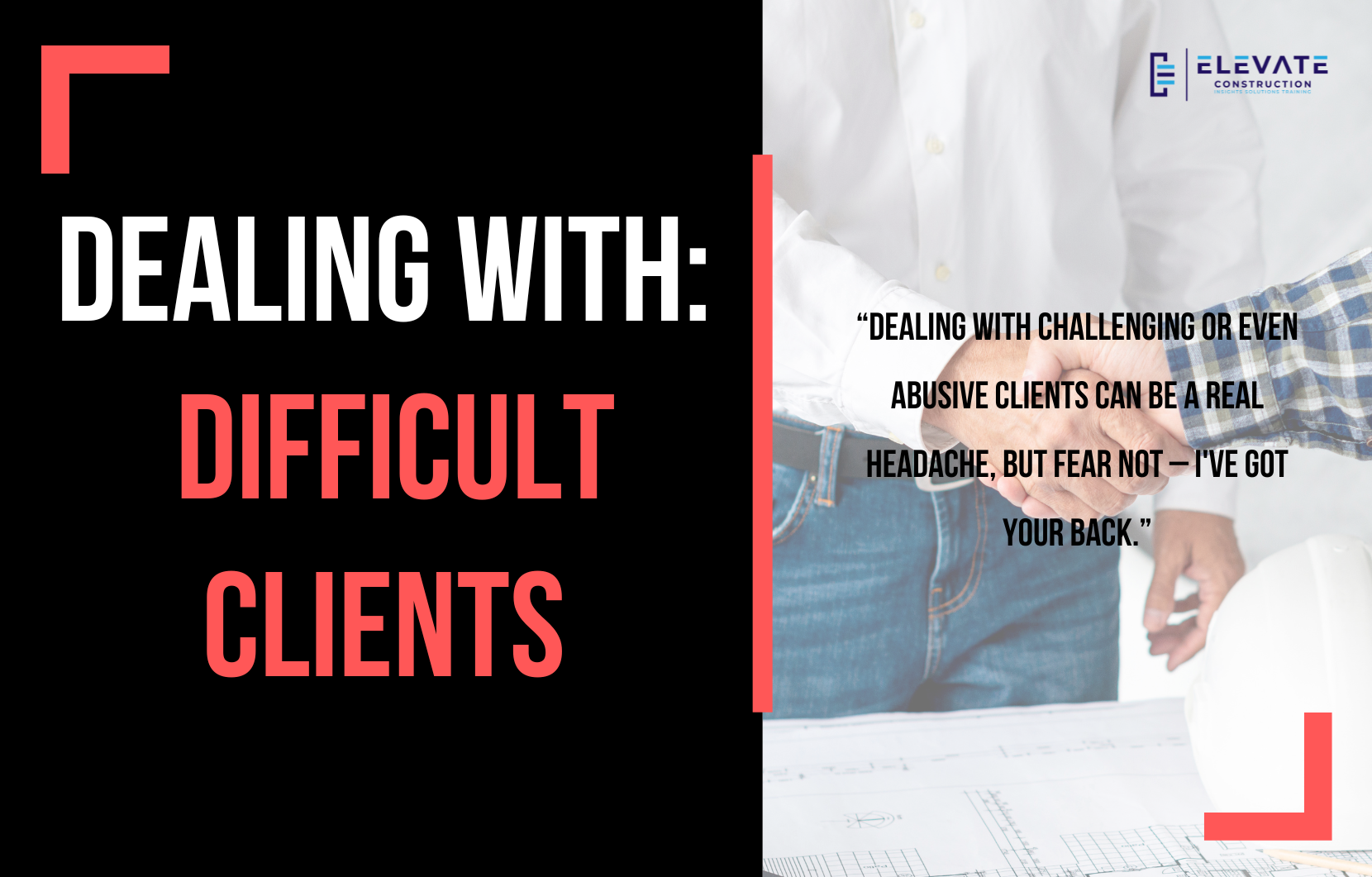Hey there, fellow builders and project managers! Today, I want to share some insights from my experiences in handling difficult clients. Dealing with challenging or even abusive clients can be a real headache, but fear not – I’ve got your back. Let’s dive into the 14 essential steps to transform chaos into calm when facing a difficult client.
1. Understand Your Client
Before anything else, take the time to understand your client and their needs. Often, toxic behavior stems from a feeling of not being heard. Establish a strong connection early on during the design and pre-construction phase to set the foundation for success.
2. Take Care of Genuine Needs
While humans are emotional creatures, it’s crucial to distinguish between genuine needs and unreasonable requests. Ensure you address your client’s legitimate needs, even if it means saying no to requests that go against contractual, moral, or ethical boundaries.
3. Grasp Contractual Requirements
To provide what is right, you must fully understand the contractual requirements. Staying within the agreed-upon bounds is key to avoiding misunderstandings and potential conflicts.
4. Be On Top of Your Game
Being on top of your game means executing your role well and responding to requests in a timely manner. Your actions, or lack thereof, can either ease or exacerbate an already tense relationship.
5. Look Deeper into Feelings
Human emotions play a significant role in client relationships. Dig deeper to understand the root cause behind emotional reactions. By identifying the underlying issues, you can effectively manage the relationship and provide a remarkable experience.
6. See Problems from the Client’s Point of View
Empathy is crucial. Try to see the problems from your client’s point of view, connect with their perspective, and act as if you were an extension of the client.
7. Build Your Team Through Difficult Situations
During challenging times, make a concerted effort to build your team. Healthy communication, goal-setting, and accountability are vital elements to foster a supportive team environment.
8. Find the Right Person to Communicate With Clients
Identify the right person within your organization who can effectively communicate with the client. Having a “owner whisperer” can significantly calm the waters and reduce drama.
9. Hold to the Right Against Difficult Clients
Regardless of external pressures, hold firm to what is right. Stick to your schedule, safety measures, and ethical standards, even if the client requests otherwise.
10. Shield Your Team from Distraction
As a leader, shield your team from the negativity and distraction caused by a difficult client. Focus on keeping your team motivated and on track.
11. Shield Your Team from a Toxic Owner’s Representative
If there’s a toxic owner’s representative, strategically shield your project team from their negative influence. Managing this relationship is critical for project success.
12. Set Boundaries with Difficult Clients
Establish clear boundaries with the client. Communicate the consequences of continued toxic behavior and let them know that certain actions will not be tolerated.
13. When to Consider Stopping Work
If all else fails, consider putting the client on notice for breach of contract. Clearly communicate that continued abusive behavior will lead to legal action and corrective measures.
14. Important Reminder
Never compromise your principles. Regardless of the situation, always do what is right, respectful, and ethical. Avoid doing anything that goes against your values for the sake of manipulation.
In conclusion, dealing with difficult clients is undoubtedly challenging, but by following these 14 steps, you can navigate through the storm and protect both your team and your integrity. Remember, doing the right thing is non-negotiable.
As a bonus, check out this blog post for more in-depth insights on handling difficult clients. May your projects be smooth sailing from here on out!
If you want to learn more we have:
-Takt Virtual Training: (Click here)
-Check out our Youtube channel for more info: (Click here)
-Listen to the Elevate Construction podcast: (Click here)
-Check out our training programs and certifications: (Click here)
–The Takt Book: (Click here)
Discover Jason’s Expertise:
Meet Jason Schroeder, the driving force behind Elevate Construction IST. As the company’s owner and principal consultant, he’s dedicated to taking construction to new heights. With a wealth of industry experience, he’s crafted the Field Engineer Boot Camp and Superintendent Boot Camp – intensive training programs engineered to cultivate top-tier leaders capable of steering their teams towards success. Jason’s vision? To expand his training initiatives across the nation, empowering construction firms to soar to unprecedented levels of excellence.
On we go!


